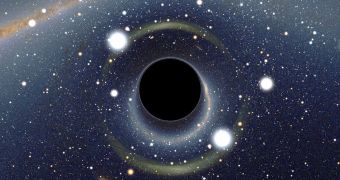Scientists at the Ohio State University (OSU) found that heavy metals including iron are capable of emitting low-energy electrons, if they are exposed to X-ray wavelengths of specific energies.
The discovery was made as the team was investigating stars and black hole, trying to determine how chemical elements emit and absorb radiation in and around these cosmic objects. Their finding has tremendous applications in the field of medicine.
Oncologists say that the new work opens the way to a new era in treating cancer. They say that it should now be possible to make heavy metal implants, that would be able to bombard tumors from within using low-energy electrons.
With this approach, the side-effects of radiation therapy would be considerably diminished, as far less healthy tissue would be exposed to the destructive force of the radiation. At the same time, cancerous cells would be destroyed entirely.
An additional way to put the new discovery to good use is the creation of enhanced medical diagnostic imaging methods. The study was led by senior research scientist Sultana Nahar and astronomy professor Anil Pradhan, Daily Galaxy reports.
The two OSU experts say that certain X-ray frequencies have the ability to produce vibrations in electrons orbiting the cores of heavy metal atoms. The elementary particles are thrown off their orbits, and are released as plasma in the proximity of the atom, at the nanometer scale.
“From a basic physics point of view, the use of radiation in medicine is highly indiscriminate. Really, there has been no fundamental advance in X-ray production since the 1890s, when Roentgen invented the X-ray tube, which produces X-rays over a very wide range,” Pradhan explains.
At the International Symposium on Molecular Spectroscopy, Nahar highlighted a computer simulation that showed a prototype capable of producing X-rays at key frequencies. The models also included the behavior of the elements gold and platinum.
“As astronomers, we apply basic physics and chemistry to understand what’s happening in stars. We’re very excited to apply the same knowledge to potentially treat cancer,” Nahar said on Friday, June 24.
“We believe that nanoparticles embedded in tumors can absorb X-rays efficiently at particular frequencies, resulting in electron ejections that can kill malignant cells,” she told attendants.
“From X-ray spectroscopy, we can predict those energies and which atoms or molecules are likely to be most effective,” she concluded.

 14 DAY TRIAL //
14 DAY TRIAL //